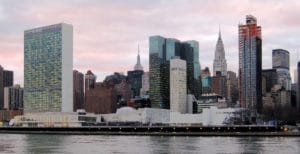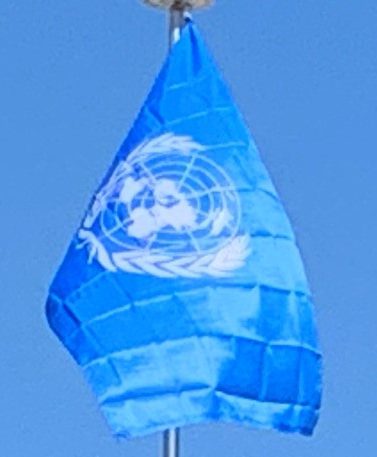Introduction:
The United Nations (UN) is an intergovernmental organization that was tasked to maintain international peace and security, develop friendly relations among nations, achieve international co-operation and be a center for harmonizing the actions of nations. The headquarters of the UN is in Manhattan, New York City, and is subject to extraterritoriality. Further main offices are situated in Geneva, Nairobi, and Vienna. The organization is financed by assessed and voluntary contributions from its member states. Its objectives include maintaining international peace and security, protecting human rights, delivering humanitarian aid, promoting sustainable development and upholding international law. The UN is the largest, most familiar, most internationally represented and most powerful intergovernmental organization in the world. In 24 October 1945, at the end of World War II, the organization was established with the aim of preventing future wars. At its founding, the UN had 51 member states; there are now 193. The UN is the successor of the ineffective League of Nations.
On 25 April 1945, 50 governments met in San Francisco for a conference and started drafting the UN Charter, which was adopted on 25 June 1945 in the San Francisco Opera House, and signed on 26 June 1945 in the Herbst Theatre auditorium in the Veterans War Memorial Building. This charter took effect on 24 October 1945, when the UN began operation.
The UN’s mission to preserve world peace was complicated in its early decades during the Cold War between the United States and Soviet Union and their respective allies. Its missions have consisted primarily of unarmed military observers and lightly armed troops with primarily monitoring, reporting and confidence-building roles. The organization’s membership grew significantly following widespread decolonization which started in the 1960s. Since then, 80 former colonies had gained independence, including 11 trust territories, which were monitored by the Trusteeship Council. By the 1970s its budget for economic and social development programs far outstripped its spending on peacekeeping. After the end of the Cold War, the UN shifted and expanded its field operations, undertaking a wide variety of complex tasks.

The UN has six principal organs: the General Assembly; the Security Council; the Economic and Social Council; the Trusteeship Council; the International Court of Justice; and the UN Secretariat. The UN System agencies include the World Bank Group, the World Health Organization, the World Food Programme, UNESCO, and UNICEF. The UN’s most prominent officer is the Secretary-General, an office held by Portuguese politician and diplomat António Guterres since 1 January 2017. Non-governmental organizations may be granted consultative status with ECOSOC and other agencies to participate in the UN’s work.
The organization, its officers and its agencies have won many Nobel Peace Prizes.
Other evaluations of the UN’s effectiveness have been mixed. Some commentators believe the organization to be an important force for peace and human development, while others have called the organization ineffective, corrupt, or biased.
History:
Background:
In the century prior to the UN’s creation, several international treaty organizations such as the International Committee of the Red Cross was formed to ensure protection and assistance for victims of armed conflict and strife. In 1914, a political assassination in Sarajevo set off a chain of events that led to the outbreak of World War I As more and more young men were sent down into the trenches, influential voices in the United States and Britain began calling for the establishment of a permanent international body to maintain peace in the postwar world. President Woodrow Wilson became a vocal advocate of this concept, and in 1918 he included a sketch of the international body in his 14-point proposal to end the war. In November 1918, the Central Powers agreed to an armistice to halt the killing in World War I. Two months later, the Allies met with Germany and Austria-Hungary at Versailles to hammer out formal peace terms. President Wilson wanted peace, but England and France disagreed, forcing harsh war reparations on their former enemies. The League of Nations was approved, and in the summer of 1919 Wilson presented the Treaty of Versailles and the Covenant of the League of Nations to the US Senate for ratification.
